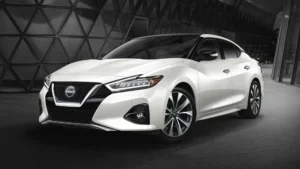When we think about cars, speed and power often come to mind. We imagine roaring engines, sleek designs, and the thrill of acceleration. However, not all cars are built for speed. In fact, some are built to be the exact opposite: slow, small, and incredibly unique.
One such car is the Peel P50, widely recognized as the slowest car in the world. Despite its lack of speed, the Peel P50 has a fascinating history and an enduring charm that has captured the attention of car enthusiasts and curious minds alike.
In this article, we will explore the Peel P50 in detail, including its origins, design, performance, and legacy.
Note: To enhance the accuracy of our results, we analyze data from ZeroTo60Times for each car’s speed performance.
The Origins of the Peel P50
The Peel P50 was created by the Peel Engineering Company on the Isle of Man, a small island located in the Irish Sea between Great Britain and Ireland. The company was known for producing fiberglass boats and motorcycles, but in the early 1960s, they ventured into the world of automobile manufacturing.
The idea behind the Peel P50 was simple: to create the smallest and most economical car possible. At the time, there was a demand for affordable and efficient transportation, especially in Europe, where narrow streets and high fuel prices made small cars highly desirable. The Peel P50 was designed to meet these needs by offering a vehicle that was not only compact but also extremely fuel-efficient.
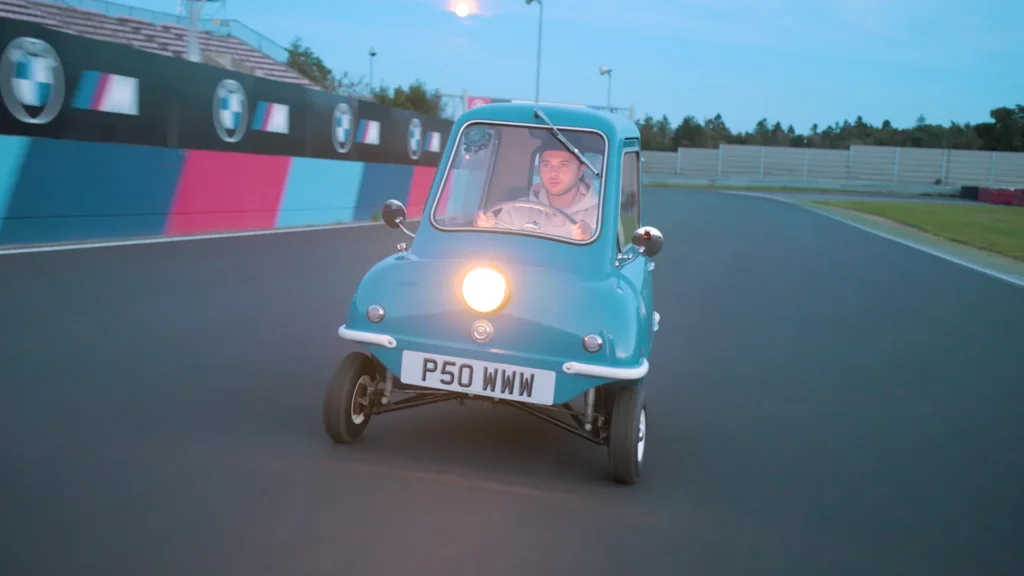
Design and Dimensions
The Peel P50 holds the Guinness World Record for the smallest production car ever made. Its design is truly one-of-a-kind, and its dimensions are nothing short of astonishing:
- Length: 54 inches (137 cm)
- Width: 39 inches (99 cm)
- Height: 47 inches (120 cm)
- Weight: Approximately 130 pounds (59 kg)
The car’s tiny size allowed it to be maneuvered in tight spaces with ease. In fact, it was so small that it could be driven indoors and parked almost anywhere. The P50 was designed with a single door on the left side, one headlight, and three wheels—two in the front and one in the back.
Inside, the Peel P50 had just enough space for one adult. The minimalist interior featured a simple bench seat, a steering wheel, and basic controls. There was no room for luxuries or additional passengers, making the P50 a true single-seater vehicle. Despite its small size, the car did come with a small luggage compartment at the rear, offering some storage space.
Performance and Specifications
When it comes to performance, the Peel P50 is not going to win any races. It was powered by a 49cc, single-cylinder, two-stroke engine, which produced a mere 4.2 horsepower. This modest engine allowed the P50 to reach a top speed of approximately 38 mph (61 km/h). While this speed might seem incredibly slow compared to modern cars, it was sufficient for the vehicle’s intended purpose of short city commutes.
The Peel P50’s small engine and lightweight design made it extremely fuel-efficient. It was capable of achieving up to 100 miles per gallon (mpg), making it one of the most economical cars of its time. This efficiency was particularly appealing during the 1960s when fuel prices were a significant concern for many drivers.
Driving Experience
Driving the Peel P50 is a unique experience, to say the least. Due to its small size and lightweight, the car feels quite different from any other vehicle on the road. The single front seat means the driver is positioned centrally, giving a go-kart-like feel to the driving experience.
The P50’s three-wheel design can make it somewhat unstable at higher speeds or when making sharp turns. Drivers need to be cautious, especially on uneven surfaces or in adverse weather conditions. The lack of modern safety features, such as seatbelts or airbags, adds to the challenge of driving the P50.
One of the most notable aspects of the P50’s driving experience is its turning circle, or rather, the lack thereof. The car has an incredibly tight turning radius, allowing it to make U-turns in the smallest of spaces. This feature, combined with its small size, made the P50 an excellent choice for navigating crowded city streets and parking in tight spots.
Production and Legacy
The Peel P50 was produced from 1962 to 1965, with only about 50 units ever made. Due to its limited production run, the car is now considered a rare and valuable collector’s item. Original Peel P50s are highly sought after by car enthusiasts and collectors, often fetching high prices at auctions.
Despite its limited production and slow speed, the Peel P50 has left a lasting legacy. It has become an iconic symbol of microcars and a testament to the ingenuity of automotive engineering. The P50’s unique design and charmingly quirky character have earned it a place in the hearts of many car enthusiasts.
In recent years, the Peel P50 has experienced a resurgence in popularity. In 2010, Peel Engineering Company was revived, and a new version of the P50 was introduced. This modern iteration retains the original’s iconic design but includes updated features such as a more powerful engine and improved safety components. The new P50 is available in both petrol and electric versions, catering to contemporary preferences for eco-friendly transportation.
Other Notable Slowest Cars in the World
2. Renault Twizy
The Renault Twizy is an electric microcar produced by the French manufacturer Renault. It was introduced in 2012 as part of Renault’s efforts to develop eco-friendly urban transportation solutions.

Design and Specifications
The Twizy’s design is futuristic and functional:
- Length: 92.6 inches (235 cm)
- Width: 47.2 inches (120 cm)
- Height: 57.1 inches (145 cm)
- Weight: Approximately 992 pounds (450 kg)
The Twizy is powered by an electric motor that delivers around 17 horsepower, giving it a top speed of about 50 mph (80 km/h). Its range on a full charge is approximately 56 miles (90 km), making it ideal for city driving.
Driving Experience
The Renault Twizy offers an open-air driving experience with its lack of traditional doors and windows. It’s a nimble and practical solution for urban environments, though its limited speed and range make it less suitable for long-distance travel.
3. Citroën 2CV
The Citroën 2CV is a legendary French car produced from 1948 to 1990. Known for its distinctive design and simplicity, the 2CV was intended to be an affordable and practical vehicle for rural areas of France.
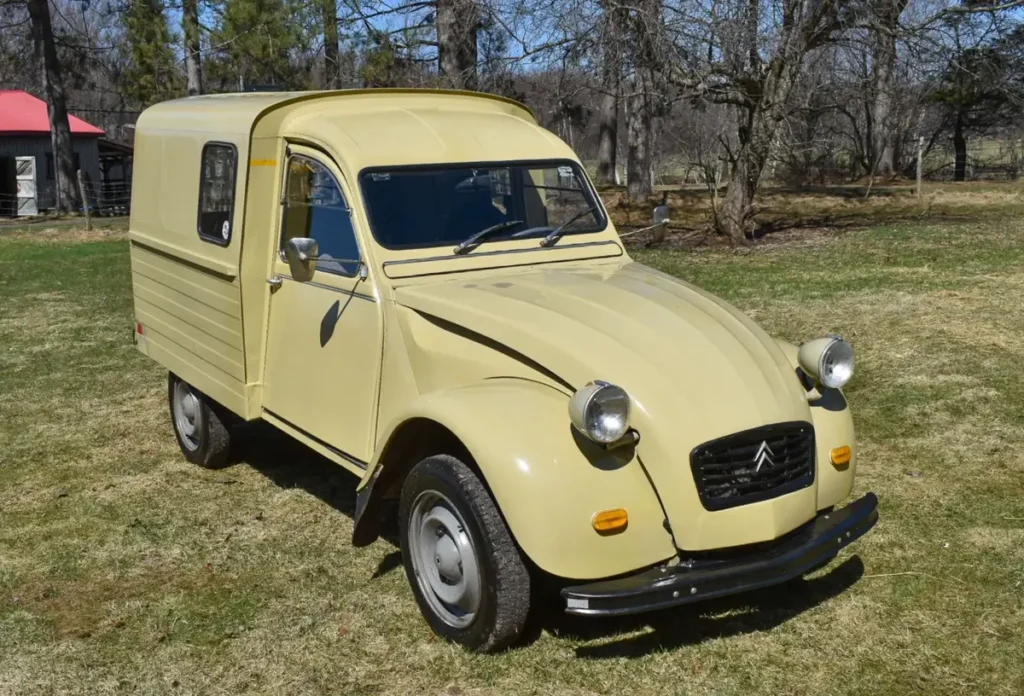
Design and Specifications
The 2CV is notable for its utilitarian design:
- Length: 149.6 inches (380 cm)
- Width: 59 inches (150 cm)
- Height: 63 inches (160 cm)
- Weight: Approximately 1,300 pounds (600 kg)
The car’s original 375cc engine produced just 9 horsepower, allowing for a top speed of around 40 mph (64 km/h). Later models featured slightly more powerful engines, but the 2CV was never designed for speed.
Driving Experience
The Citroën 2CV is known for its comfortable ride, thanks to its innovative suspension system. It’s a slow but reliable car, perfect for leisurely drives through the countryside. Its simplicity and ease of maintenance have made it a beloved classic.
4. Tata Nano
The Tata Nano was introduced in 2008 by the Indian automotive company Tata Motors. It was marketed as the world’s cheapest car, aimed at providing affordable transportation for millions of people in India.
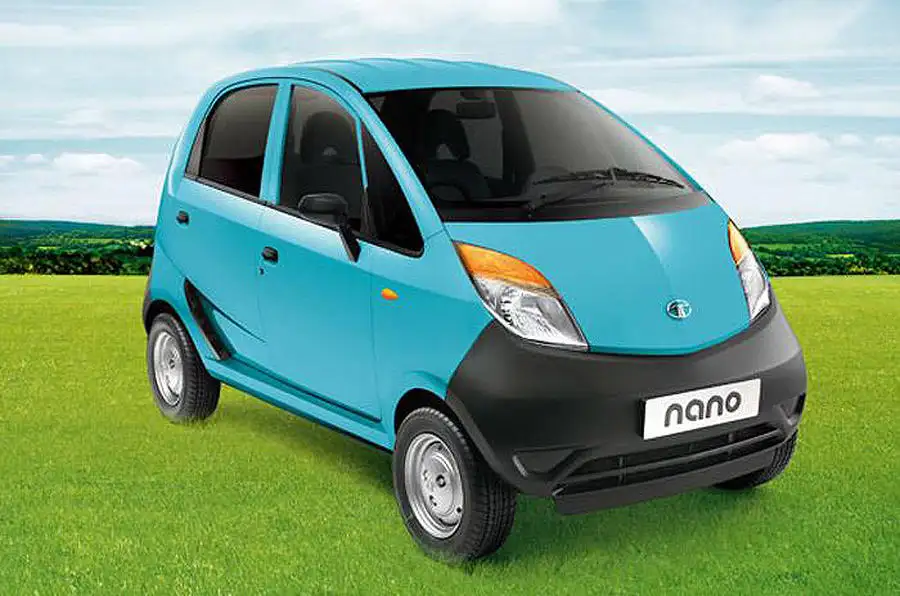
Design and Specifications
The Nano’s design prioritizes affordability and functionality:
- Length: 122 inches (309 cm)
- Width: 59 inches (150 cm)
- Height: 65 inches (165 cm)
- Weight: Approximately 1,400 pounds (635 kg)
The car is powered by a 624cc, two-cylinder engine that produces about 37 horsepower. This modest power output gives the Nano a top speed of around 65 mph (105 km/h).
Driving Experience
The Tata Nano offers a basic but adequate driving experience. It’s designed for short urban commutes and provides a cost-effective transportation solution. While it’s not fast, the Nano’s affordability has made car ownership accessible to many.
5. Trabant
The Trabant was produced by East German manufacturer VEB Sachsenring Automobilwerke Zwickau from 1957 to 1991. It became a symbol of the Eastern Bloc’s automotive industry and is often remembered for its simplicity and modest performance.
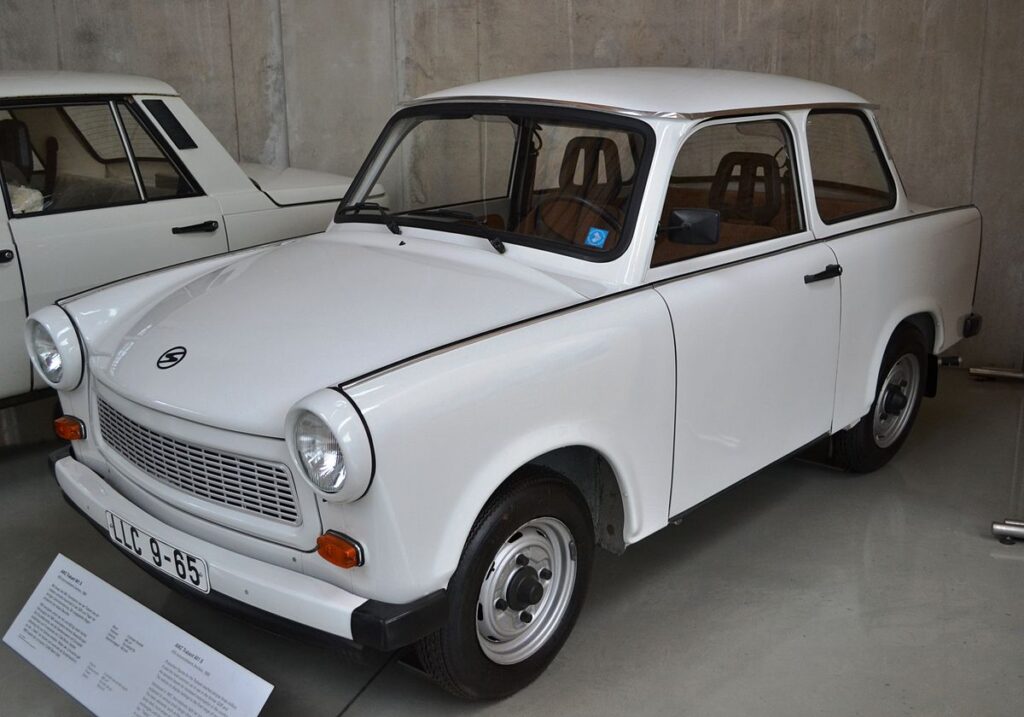
Design and Specifications
The Trabant’s design is functional and minimalistic:
- Length: 140 inches (355 cm)
- Width: 58 inches (148 cm)
- Height: 56 inches (143 cm)
- Weight: Approximately 1,500 pounds (680 kg)
The car is powered by a 600cc, two-cylinder, two-stroke engine producing 26 horsepower, which gives it a top speed of around 62 mph (100 km/h).
Driving Experience
Driving a Trabant is a unique experience, characterized by its simple controls and basic amenities. The car’s slow acceleration and limited speed are offset by its nostalgic charm and historical significance.
6. Hindustan Ambassador
The Hindustan Ambassador, often referred to as the “Amby,” was produced in India from 1958 to 2014. Based on the British Morris Oxford, the Ambassador became a beloved and iconic car in India.

Design and Specifications
The Ambassador’s design is classic and robust:
- Length: 173 inches (439 cm)
- Width: 65 inches (165 cm)
- Height: 62 inches (157 cm)
- Weight: Approximately 2,500 pounds (1,130 kg)
The car was powered by various engines over the years, but the most common was a 1,500cc, four-cylinder engine producing around 37 horsepower. This allowed the Ambassador to reach a top speed of about 65 mph (105 km/h).
Driving Experience
The Hindustan Ambassador offers a smooth and comfortable ride, with ample space and a durable build. While not fast, the Ambassador is known for its reliability and has been a popular choice for government officials and taxi services in India.
7. Aixam 400
The Aixam 400 is a microcar produced by the French manufacturer Aixam. It’s designed to be a compact and efficient vehicle for urban environments, especially in Europe where such cars are popular.
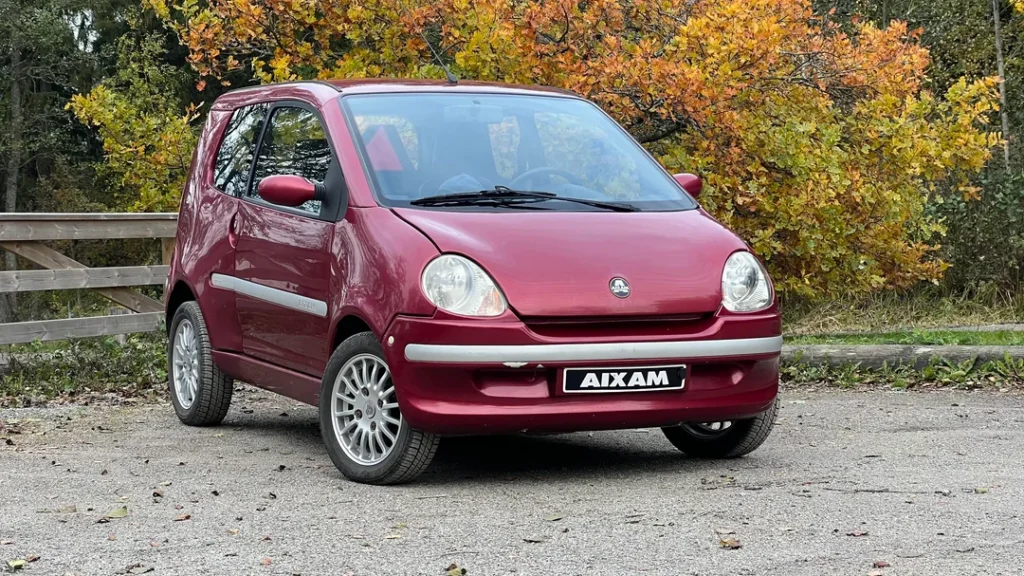
Design and Specifications
The Aixam 400’s design is compact and practical:
- Length: 106 inches (269 cm)
- Width: 57 inches (145 cm)
- Height: 58 inches (148 cm)
- Weight: Approximately 880 pounds (400 kg)
The car is powered by a small diesel engine that produces about 5.6 horsepower, giving it a top speed of around 28 mph (45 km/h). This low speed allows the Aixam 400 to be driven by individuals without a full driver’s license in some countries.
Driving Experience
Driving the Aixam 400 is a straightforward and practical experience. It’s perfect for short trips and navigating congested urban streets. While it’s not built for speed, its efficiency and ease of use make it a popular choice in Europe.
Conclusion
While the world of automobiles is often dominated by discussions of speed and power, the slowest cars in the world offer a different perspective. These vehicles are designed with various priorities in mind, such as affordability, practicality, and efficiency. From the tiny Peel P50 to the iconic Citroën 2CV, each of these slow cars has a unique story and purpose.
These cars remind us that speed isn’t everything. Sometimes, the journey itself, the simplicity of the design, and the ingenuity behind the creation of these vehicles are what truly matter. Whether it’s navigating narrow city streets, providing affordable transportation, or simply standing as a symbol of a bygone era, the slowest cars in the world have left a lasting impact on automotive history.
So, the next time you see a sleek sports car zooming by, take a moment to appreciate the charm and significance of these slower, yet equally fascinating, vehicles. They may not break any speed records, but they have certainly earned their place in the annals of automotive history.


